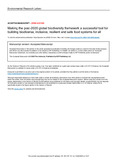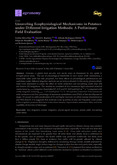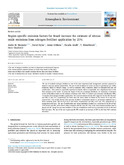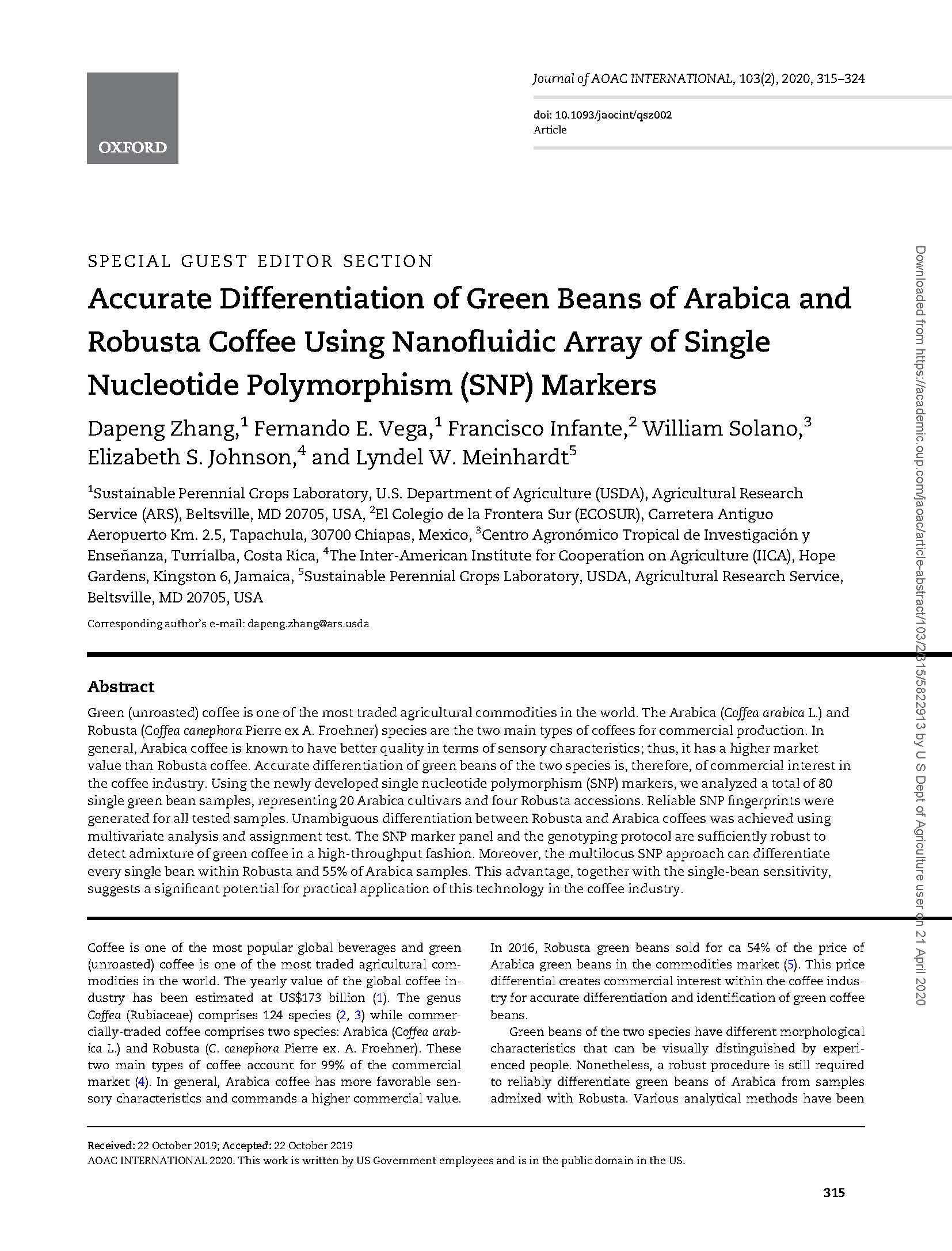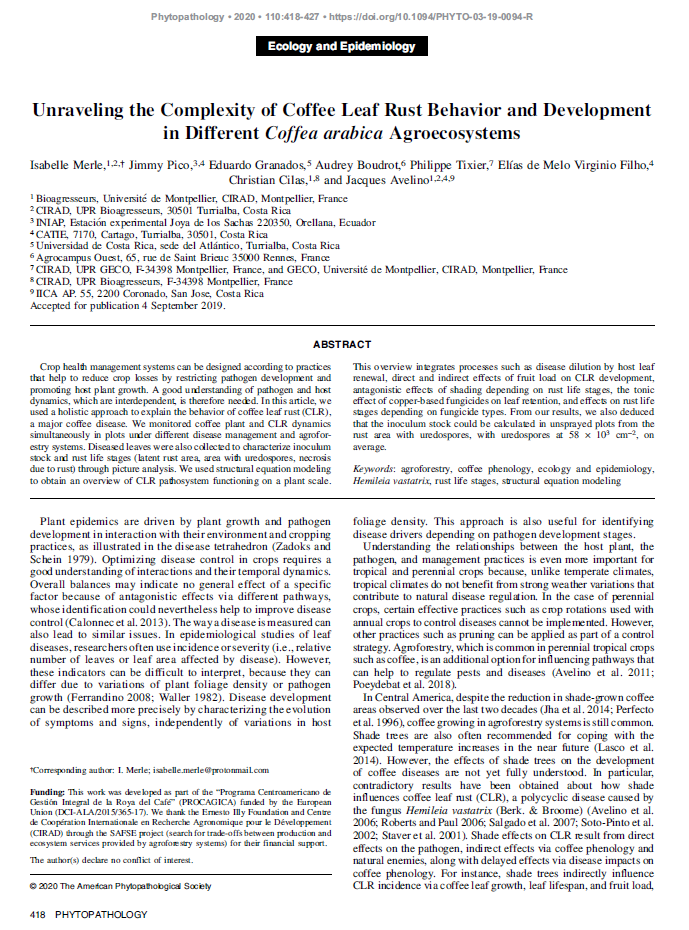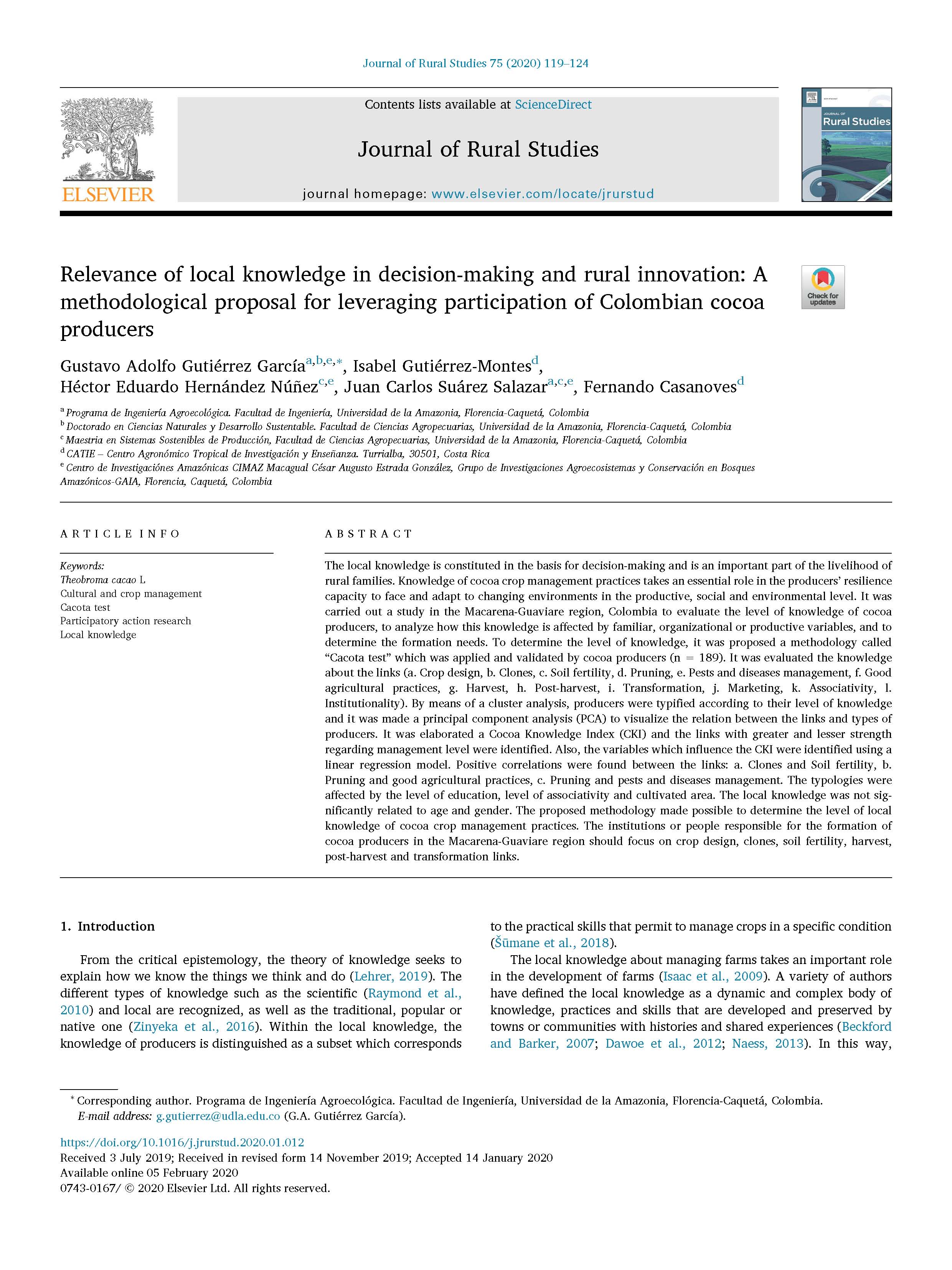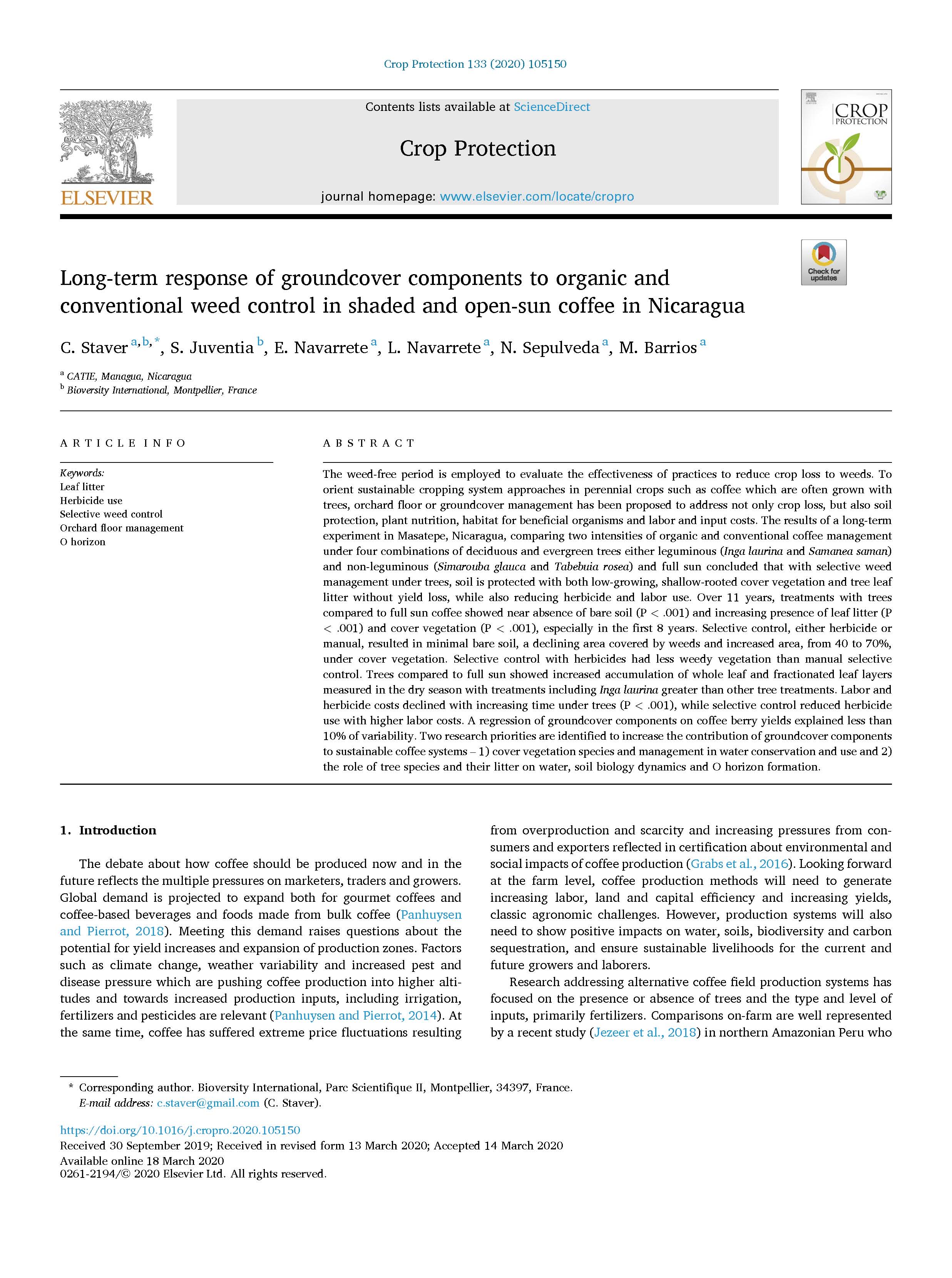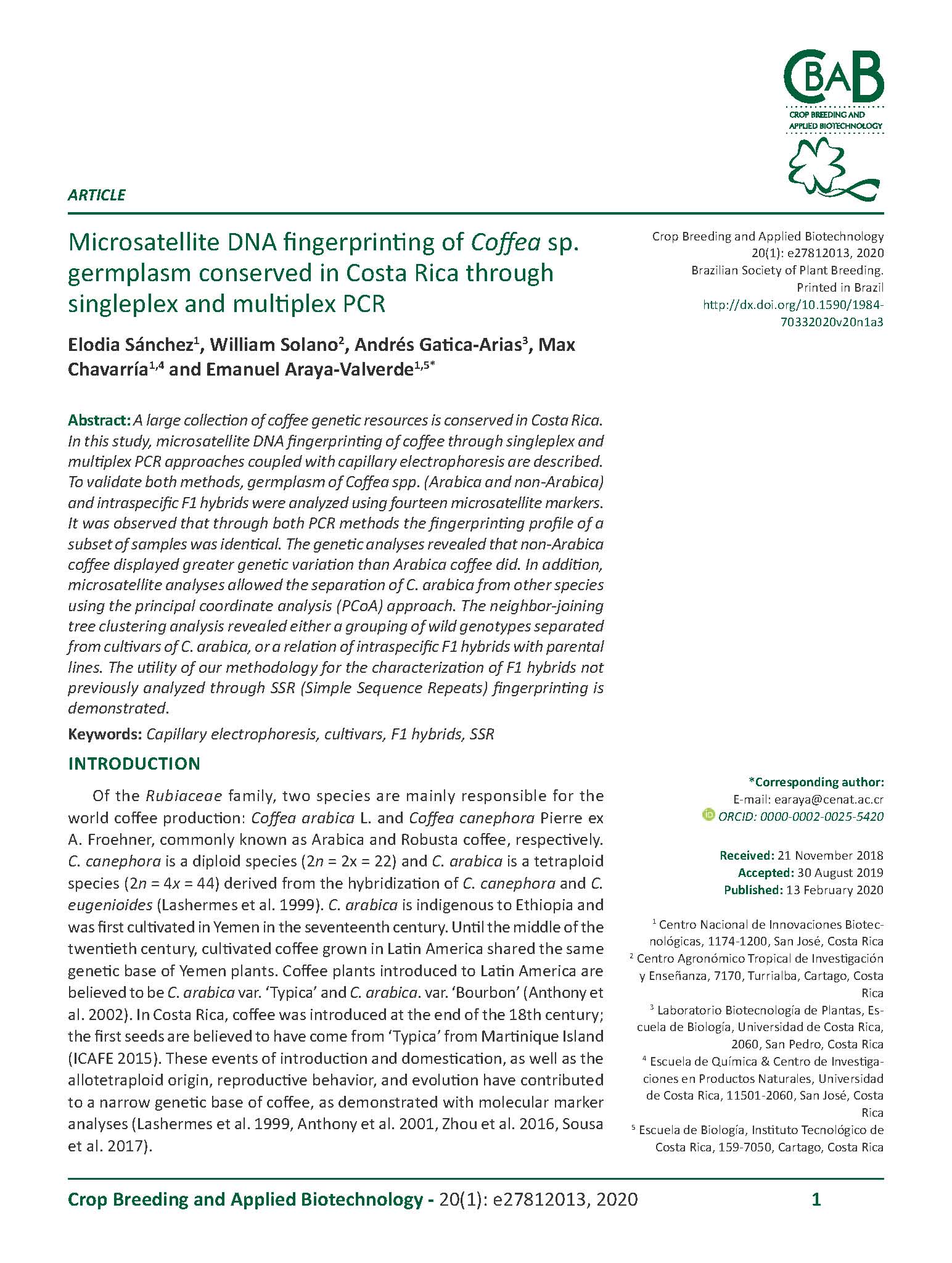Publicaciones en revistas científicas: Recent submissions
Voici les éléments 191-200 de 287
-
Making the post-2020 global biodiversity framework a successful tool for building biodiverse, inclusive, resilient and safe food systems for all
(IOP Publishing, Bristol (Reino Unido), 2020-08)COVID-19 has exposed the vulnerability of our economies to shocks, and it has laid bare deep inequalities in our society that threaten to derail the Sustainable Development Goals. Governments around the world are looking ... -
Secondary Tropical Dry Forests Are Important to Cattle Ranchers in Northwestern Costa Rica
(2020-07)In the dry regions of Central America, forests in cattle ranches are used as a refuge for cattle during the dry season, and there is no much information about this practice. To determine the frequency of this practice ... -
Unraveling Ecophysiological Mechanisms in Potatoes under Different Irrigation Methods: A Preliminary Field Evaluation
(2020)Potatoes—a global food security and staple crop—is threatened by dry spells in drought-prone areas. The use of physiological thresholds to save water while maintaining a reasonable tuber yield has been proposed, but their ... -
Region-specific emission factors for Brazil increase the estimate of nitrous oxide emissions from nitrogen fertiliser application by 21%
(Elsevier, Ámsterdam, Países Bajos, 2020)The use of synthetic nitrogen fertilisers is one of the most important land management practices proposed to improve crop and pasture productivity. The use of such fertilisers in excess can lead to greenhouse gas (GHG) ... -
Measured ammonia emissions from tropical and subtropical pastures: A comparison with 2006 IPCC, 2019 Refinement to the 2006 IPCC, and EMEP/EEA (European Monitoring and Evaluation Programme and European Environmental Agency) inventory estimates
(American Dairy Science Association, Champaign, IL, EUA ; Elsevier, Ámsterdam, Países Bajos, 2020)Agriculture is the largest source of ammonia (NH3) emissions. As NH3 is an indirect greenhouse gas, NH3 measurements are crucial to improving greenhouse gas emission inventory estimates. Moreover, NH3 emissions have wider ... -
Accurate Differentiation of Green Beans of Arabica and Robusta Coffee Using Nanofluidic Array of Single Nucleotide Polymorphism (SNP) Markers
(2020)Green (unroasted) coffee is one of the most traded agricultural commodities in the world. The Arabica (Coffea arabica L.) and Robusta (Coffea canephora Pierre ex A. Froehner) species are the two main types of coffees for ... -
Unraveling the Complexity of Coffee Leaf Rust Behavior and Development in Different Coffea arabica Agroecosystems
(2020)Crop health management systems can be designed according to practices that help to reduce crop losses by restricting pathogen development and promoting host plant growth. A good understanding of pathogen and host dynamics, ... -
Relevance of local knowledge in decision-making and rural innovation: A methodological proposal for leveraging participation of Colombian cocoa producers
(Elsevier, 2020)The local knowledge is constituted in the basis for decision-making and is an important part of the livelihood of rural families. Knowledge of cocoa crop management practices takes an essential role in the producers’ ... -
Long-term response of groundcover components to organic and conventional weed control in shaded and open-sun coffee in Nicaragua
(Crop protection, 2020)The weed-free period is employed to evaluate the effectiveness of practices to reduce crop loss to weeds. To orient sustainable cropping system approaches in perennial crops such as coffee which are often grown with trees, ... -
Microsatellite DNA fingerprinting of Coffea sp. germplasm conserved in Costa Rica through singleplex and multiplex PCR
(Crop Breeding and Applied Biotechnology, 2020)A large collection of coffee genetic resources is conserved in Costa Rica. In this study, microsatellite DNA fingerprinting of coffee through singleplex and multiplex PCR approaches coupled with capillary electrophoresis ...


